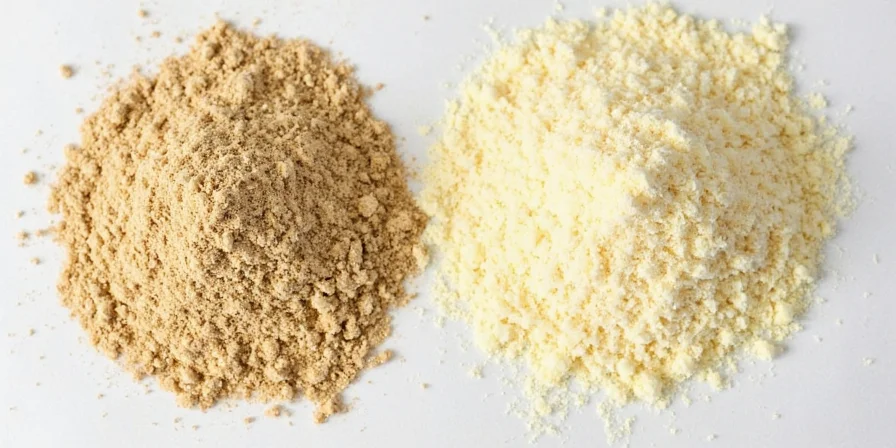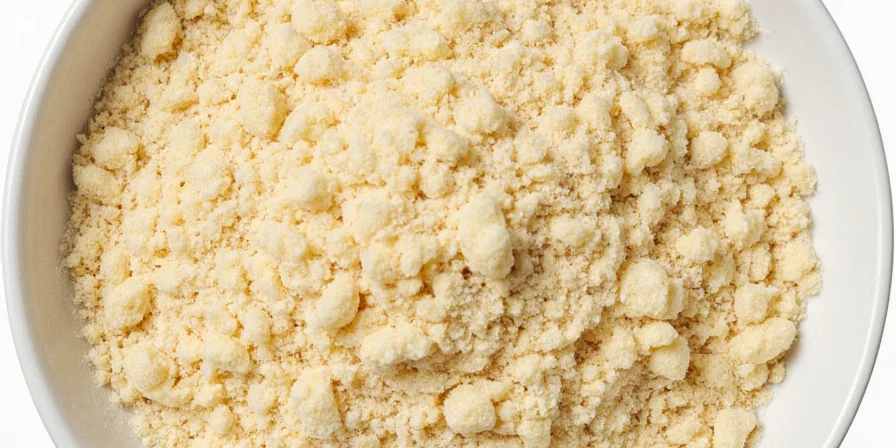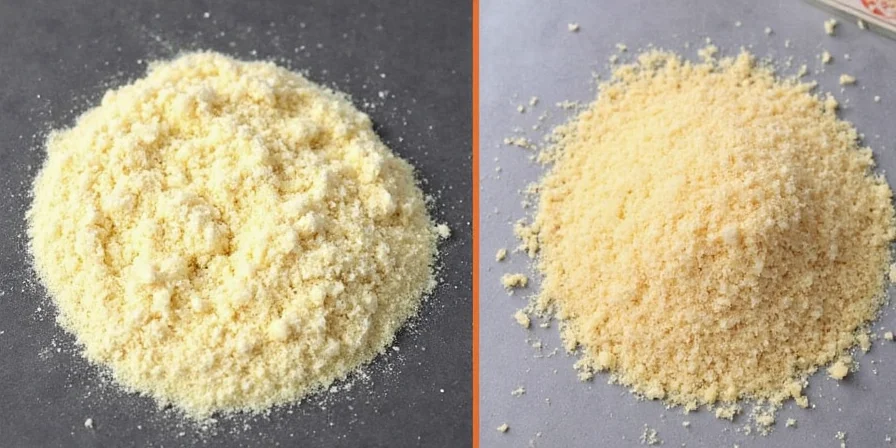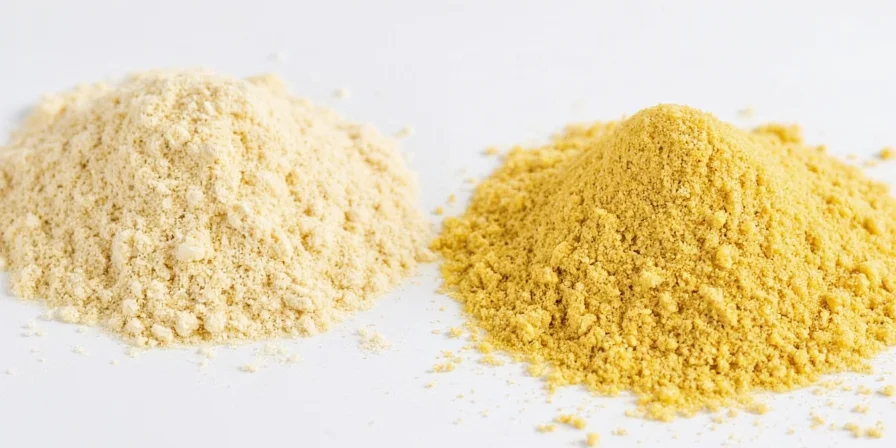Garlic Powder vs. Granulated Garlic: A Flavor-Fueled Face-Off!
If you’ve ever stood in front of your spice rack scratching your head, wondering whether to grab the garlic powder or granulated garlic, you’re not alone. In this article, we’ll break down the differences, use cases, and flavor profiles of these two allium contenders. Whether you're a seasoned chef or an enthusiastic home cook, by the end of this read, you’ll know exactly which one to reach for — no more guessing games!
Table of Contents
- What’s the Difference?
- Flavor Profiles: Punchy vs. Subtle
- Cooking with Garlic Powder: Tips & Tricks
- Granulated Garlic in Action: When to Use It
- Spice Rack Shakedown: Which One Should You Stock?
- Visual Comparison Table
- Quick Cooking Hacks: From Roasts to Ramen
- Storage and Shelf Life: Keep That Garlic Fresh
- Myth Busting: Garlic Edition
- Summary & Conclusion
What’s the Difference?
You might think garlic powder and granulated garlic are just different names for the same thing — like calling someone “Bob” instead of “Robert.” But in reality, they have distinct textures, strengths, and ideal uses.
- Garlic Powder: This is made by dehydrating garlic cloves and then grinding them into a fine powder. It dissolves easily and has a concentrated flavor.
- Granulated Garlic: Think of it as garlic powder’s chunkier cousin. It’s also dehydrated but ground less finely, giving it a texture similar to cornmeal or coarse sand.
Flavor Profiles: Punchy vs. Subtle
Understanding how each type of garlic impacts flavor is key to using them correctly in your cooking.
- Garlic Powder: More intense and immediate. It delivers a sharp, pungent flavor that infuses dishes quickly without needing heat.
- Granulated Garlic: Slightly milder and slower to release its flavor. It tends to build depth when cooked, especially when toasted first.

Cooking with Garlic Powder: Tips & Tricks
Garlic powder is your go-to for instant flavor, especially in dry rubs, sauces, or soups where you want a uniform taste throughout the dish.
- Dry Rubs: Mix with salt, pepper, paprika, and cayenne for the perfect steak or chicken seasoning.
- Soups & Sauces: Stir directly into tomato sauce, chili, or broth-based soups for a quick flavor boost.
- No Time to Chop? Garlic powder saves time when fresh garlic isn’t practical — no peeling, chopping, or cleanup required!

Granulated Garlic in Action: When to Use It
Granulated garlic shines when you want some texture and depth in longer-cooked dishes. It holds up well to heat and integrates beautifully into complex flavors.
- Roasting: Sprinkle over vegetables before roasting to add warmth and sweetness.
- Marinades: Works great in oil-based marinades where it slowly releases flavor during marination.
- Homemade Spice Blends: Perfect for making your own Italian seasonings, jerk blends, or taco mixes.

Spice Rack Shakedown: Which One Should You Stock?
If you only had room for one, which should it be? Let’s break it down based on your cooking style.
| Cooking Style | Best Choice | Why? |
|---|---|---|
| Fast Weeknight Meals | Garlic Powder | Instant flavor, no prep needed. |
| Slow Cooking / Roasting | Granulated Garlic | Develops better flavor over time. |
| Homemade Spices | Granulated Garlic | Mixes better with other whole spices. |
| Asian-Inspired Dishes | Garlic Powder | Blends well with soy, sesame, and rice vinegar. |
Visual Comparison Table
| Feature | Garlic Powder | Granulated Garlic |
|---|---|---|
| Texture | Fine, flour-like | Coarse, gritty |
| Flavor Release | Immediate | Builds over time |
| Ideal For | Soups, sauces, rubs | Marinades, roasting, blends |
| Shelf Life | 2–3 years | 2–3 years |
Quick Cooking Hacks: From Roasts to Ramen
Ready to level up your garlic game? Here are some genius hacks to try at home.
- The Lazy Chef Hack: Swap fresh garlic for equal parts garlic powder in most recipes — just remember it’s more potent, so start with half the amount and adjust.
- Toast It First: Lightly toast granulated garlic in a dry pan to deepen its nutty aroma before adding to dishes.
- Ramen Upgrade: Add a pinch of garlic powder to instant ramen for an umami-packed punch.
- Make Your Own Garlic Salt: Mix granulated garlic with coarse sea salt for a versatile kitchen staple.

Storage and Shelf Life: Keep That Garlic Fresh
Both garlic powder and granulated garlic have a decent shelf life, but storing them properly ensures maximum potency and flavor retention.
- Storage Tips:
- Keep in airtight containers.
- Store in a cool, dark place (like a pantry or cabinet).
- Avoid moisture — it can clump and reduce flavor.
- Shelf Life:
- Garlic Powder: 2–3 years
- Granulated Garlic: 2–3 years
Myth Busting: Garlic Edition
Let’s debunk some common myths floating around about garlic powder and granulated garlic.
- Myth #1: “Garlic powder is just dried-up garbage.”
- Truth: Wrong! When stored properly, garlic powder retains much of its original flavor and even some nutrients.
- Myth #2: “Granulated garlic doesn’t taste as strong.”
- Truth: It may seem milder at first, but it builds flavor better during long cooking.
- Myth #3: “They’re interchangeable in every recipe.”
- Truth: Nope! Adjust quantity and method depending on which one you use.
Summary & Conclusion
So, what’s the final verdict in our garlic powder vs. granulated garlic showdown?
- Use Garlic Powder when you need quick, punchy flavor in soups, sauces, or fast dishes.
- Choose Granulated Garlic for roasting, marinades, and spice blends where flavor development matters.
- Both last around 2–3 years if stored right.
In short, they’re both excellent — just suited for different roles in the kitchen. Think of garlic powder as your kitchen’s MVP (Most Valuable Powder) and granulated garlic as your deep-cut flavor specialist. Now go forth and season like a pro!










 浙公网安备
33010002000092号
浙公网安备
33010002000092号 浙B2-20120091-4
浙B2-20120091-4